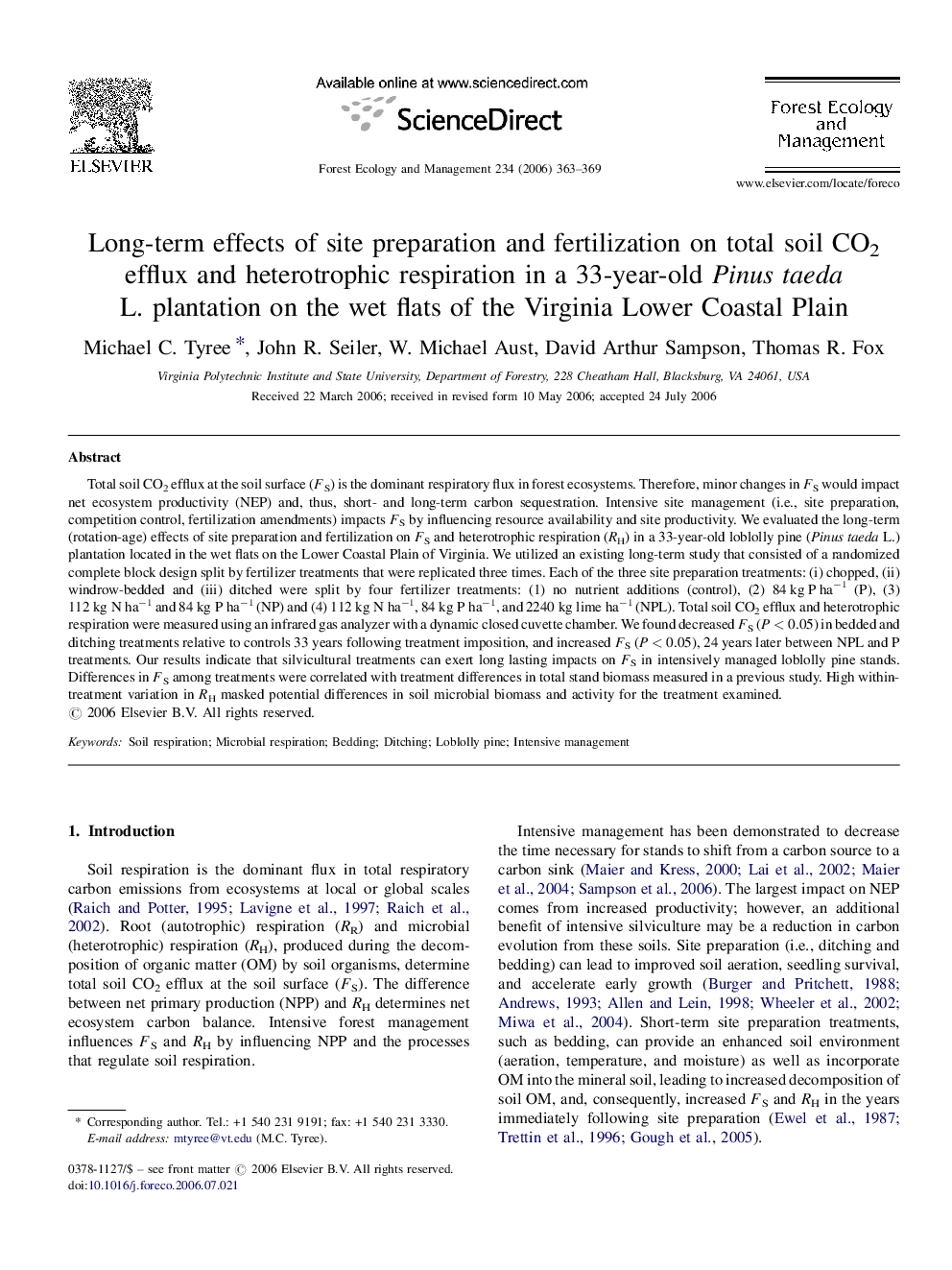| Article ID | Journal | Published Year | Pages | File Type |
|---|---|---|---|---|
| 90221 | Forest Ecology and Management | 2006 | 7 Pages |
Total soil CO2 efflux at the soil surface (FS) is the dominant respiratory flux in forest ecosystems. Therefore, minor changes in FS would impact net ecosystem productivity (NEP) and, thus, short- and long-term carbon sequestration. Intensive site management (i.e., site preparation, competition control, fertilization amendments) impacts FS by influencing resource availability and site productivity. We evaluated the long-term (rotation-age) effects of site preparation and fertilization on FS and heterotrophic respiration (RH) in a 33-year-old loblolly pine (Pinus taeda L.) plantation located in the wet flats on the Lower Coastal Plain of Virginia. We utilized an existing long-term study that consisted of a randomized complete block design split by fertilizer treatments that were replicated three times. Each of the three site preparation treatments: (i) chopped, (ii) windrow-bedded and (iii) ditched were split by four fertilizer treatments: (1) no nutrient additions (control), (2) 84 kg P ha−1 (P), (3) 112 kg N ha−1 and 84 kg P ha−1 (NP) and (4) 112 kg N ha−1, 84 kg P ha−1, and 2240 kg lime ha−1 (NPL). Total soil CO2 efflux and heterotrophic respiration were measured using an infrared gas analyzer with a dynamic closed cuvette chamber. We found decreased FS (P < 0.05) in bedded and ditching treatments relative to controls 33 years following treatment imposition, and increased FS (P < 0.05), 24 years later between NPL and P treatments. Our results indicate that silvicultural treatments can exert long lasting impacts on FS in intensively managed loblolly pine stands. Differences in FS among treatments were correlated with treatment differences in total stand biomass measured in a previous study. High within-treatment variation in RH masked potential differences in soil microbial biomass and activity for the treatment examined.
